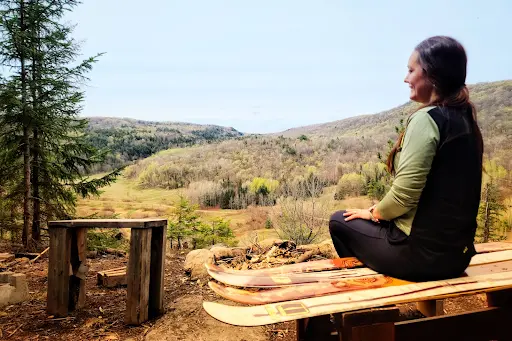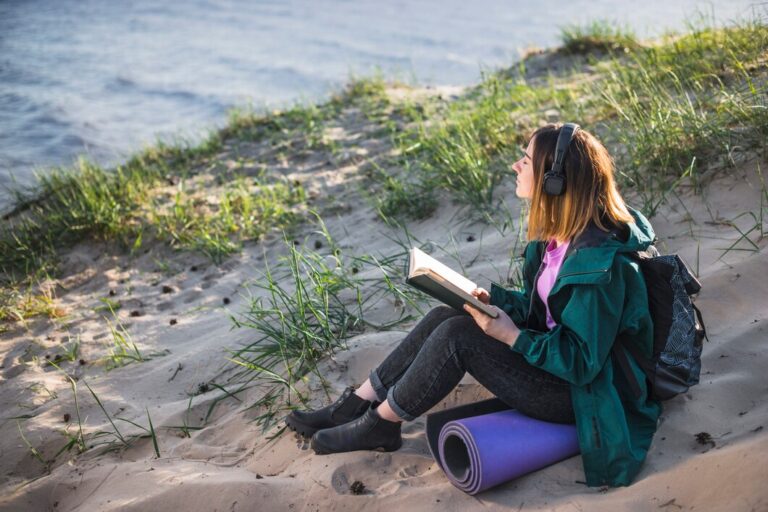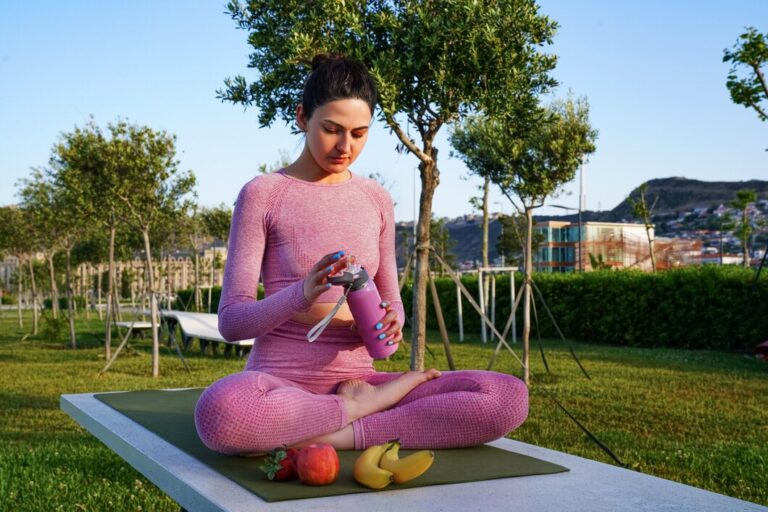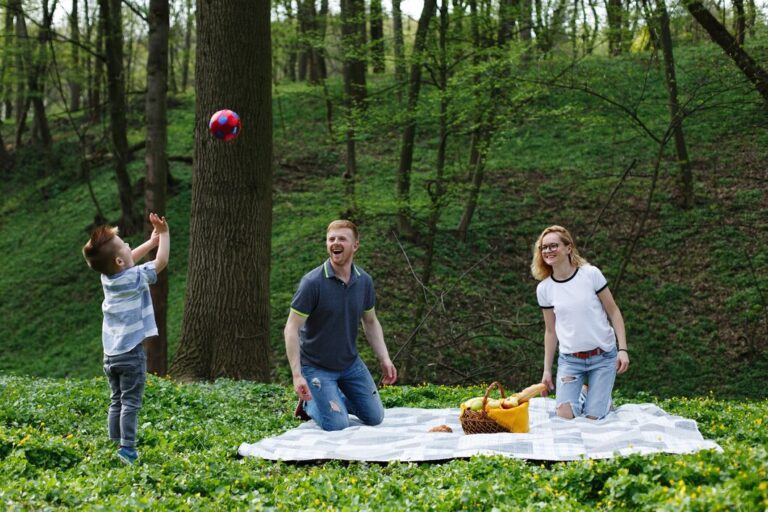
I remember hitting a wall. Not a physical wall, but a deep, soul-level exhaustion. My days felt like a frantic blur of screens – laptop, phone, TV – punctuated by endless notifications and the low-grade hum of digital anxiety. I was constantly ‘on’, yet felt profoundly disconnected from myself, my creativity, and even the people I cared about most.
My mind was cluttered, my body tense, and the simple joy of being present felt like a distant memory. I knew something had to change, drastically. That’s when the idea, almost a whisper at first, began to form: what if I just… stopped? What if I went somewhere designed for quiet, for restoration, for unplugging completely? What if I planned my first wellness retreat?
The thought was both exhilarating and terrifying. Could I really disconnect? Would I know what to do with myself? Was it just another self-indulgent trend? But the burnout was real, and the pull towards quiet was stronger. I decided to take the leap.
That first wellness retreat was genuinely transformative, and not in the superficial ‘eat-pray-love’ way I might have initially feared. It was a powerful reminder of what happens when you intentionally disconnect to reconnect. So, I want to share my journey and the practical steps I learned along the way, hoping it might inspire and guide you if you’re feeling that same pull towards planning your first wellness retreat.
What My Wellness Retreat Actually Taught Me (Beyond the Brochure)
Going into it, I had vague notions based on glossy brochures – yoga poses against stunning backdrops, healthy meals, maybe some spa treatments. And yes, some retreats offer those things. But what I experienced went much deeper than aesthetics. My first wellness retreat wasn’t just about pampering; it was about stripping away the non-essential to make space for what truly matters.
I learned that a wellness retreat, at its core, is about creating intentional space for inner work and restoration. It’s less about doing and more about being. The schedule might include activities like yoga retreats, meditation, workshops, or nature walks, but the real magic happened in the pauses, in the quiet moments between activities when my mind finally had room to breathe. It wasn’t about achieving perfect poses or profound epiphanies on demand, but about patiently showing up for myself, day after day.
I also discovered the unexpected power of simple community. Being surrounded by others on a similar journey, sharing meals without phones, engaging in quiet activities together – it fostered a unique sense of connection that felt incredibly nourishing after the isolation of my digitally saturated life.
There was an unspoken understanding, a shared vulnerability that felt safe and supportive. And finally, I realized it was about remembering how to listen – to my own body, my own intuition, and the subtle whispers of the natural world around me, sounds often drowned out by the constant noise of modern living.
The Sheer Magic of Unplugging: My Personal Detox Diary
Let me be honest: the idea of completely disconnecting from my phone and laptop for several days filled me with low-key panic. What if there was an emergency? What would I do with all that time? Wouldn’t I feel incredibly restless and bored? The first 24 hours were. twitchy. I kept reaching for a phone that wasn’t there. My mind felt like a shaken snow globe, thoughts swirling chaotically without their usual digital outlets.
But then, something shifted. Slowly, almost imperceptibly, the mental static began to fade. Without the constant input and obligation to respond, my nervous system started to calm down. I began to notice things I hadn’t noticed in years. The intricate patterns of bark on a tree during a silent walk. The way sunlight dappled through the leaves. The incredible taste of simple, fresh food eaten slowly, without distraction. The nuanced sounds of the environment around me birdsong, wind, rain became my soundtrack.
My focus improved dramatically. I could sit and read a physical book for an hour without feeling agitated. My journal filled with reflections and observations that felt deeper, less scattered. Conversations with fellow retreatants were more present, more meaningful. It felt like my brain was defragmenting, creating space for clarity and creativity.
By day three, the twitchiness was gone, replaced by a profound sense of peace and presence I hadn’t realized I was missing so badly. The ‘boredom’ I feared never truly materialized; instead, I found a rich inner world and a vibrant outer world waiting to be rediscovered once the screen went dark. It wasn’t about missing out online; it was about realizing how much I’d been missing out on in real life.
Plan Your First Wellness Retreat: A Step-by-Step Guide
Seeing how much that first retreat helped me, I believe everyone deserves that kind of reset. If you’re considering planning your own, here’s the process I followed, broken down into manageable steps. Remember, this is your journey, so adapt it to your needs.
Step 1: Define Your ‘Why’ & Needs:
This was crucial for me. I asked myself:
- What am I truly seeking? Stress relief?
- Creative inspiration? Deeper spiritual connection?
- Healing from burnout? Physical rejuvenation?
- Understanding my core motivation helped me narrow down the type of retreat I needed.
- Was I craving complete silence, or gentle guidance and community?
- Did I need active workshops or just quiet time in nature?
- Be honest with yourself about what your soul is asking for.
Step 2: Set a Budget & Timeline:
Wellness retreats range widely in price. Determine what’s realistic for you financially. Factor in travel costs, retreat fees, and any extra spending money. Decide on the duration – a weekend, a week, longer? Even a short retreat can be impactful. I started with a 4-day retreat, which felt manageable for my first time.
Step 3: Research, Research, Research:
This is where the real digging begins. I started searching online using keywords related to my needs (e.g., “mindfulness retreat nature UK,” “beginner yoga retreat quiet,” “digital detox weekend retreat”). I looked at retreat directories, wellness travel blogs, and asked for recommendations from trusted friends.
Step 4: Vet Your Options Carefully:
Once I had a shortlist, I looked closely at each option.
- Read the full program/schedule: Did the activities align with my ‘why’?
- Check instructor credentials/philosophy: Did their approach resonate with me?
- Look at photos/videos: Did the environment feel calming and supportive?
- Read reviews/testimonials: What did past participants say? Look for reviews mentioning the atmosphere, the level of support, and the overall experience beyond just the facilities.
- Understand the inclusions/exclusions: What was covered in the price (meals, accommodation, activities, supplies)?
Step 5: Book & Prepare Logistics:
Once I chose my retreat, I booked it and arranged travel. I immediately requested the time off work and started preparing mentally and practically (using a checklist – see below!). This included informing key people I’d be offline.
Taking it step-by-step made the planning process feel less overwhelming and more intentional.
Finding My Sanctuary (And How You Can Find Yours)
Choosing the right place felt incredibly important. I knew I needed somewhere truly quiet, deeply immersed in nature, and with an ethos that genuinely supported disconnection and inner work, not just surface-level wellness buzzwords. My personal criteria focused on finding a sanctuary that felt nurturing and authentic.
For me, this meant:
- Nature Immersion: I specifically looked for retreats located away from towns, surrounded by forests, mountains, or water. I wanted nature to be an active participant in my restoration.
- Emphasis on Quiet & Mindfulness: I scanned descriptions for words like ‘silent periods,’ ‘mindful movement,’ ‘meditation,’ ‘contemplative walks.’ I avoided places that seemed overly focused on socializing or high-energy activities.
- Simple, Comfortable Accommodation: I wasn’t looking for luxury, but for clean, comfortable, and peaceful lodging that felt supportive, not distracting. A private room felt important for my first time, allowing for personal space.
- Nourishing Food: Healthy, wholesome food was a priority. I looked for retreats mentioning locally sourced, plant-based, or thoughtfully prepared meals eaten communally (often in silence).
- Experienced, Resonant Facilitators: I researched the backgrounds and philosophies of the retreat leaders. I wanted guidance that felt grounded, compassionate, and aligned with my personal values.
- Clear Tech Policy: I looked for retreats that explicitly encouraged or required digital disconnection, indicating they understood its importance for the experience.
How You Can Find Yours: Reflect on what your ideal sanctuary looks like. Do you crave mountains or ocean? Solitude or community? Intense workshops or gentle guidance? A specific modality like yoga, meditation, art, or nature therapy?
Use your ‘why’ from Step 1 to guide your search. Don’t be swayed purely by beautiful photos; read the descriptions and reviews carefully to understand the feeling and focus of the retreat. Trust your intuition – which option feels most like a true refuge for you right now?
Activities That Mended Me: Embracing the Retreat Experience
The structured activities on my retreat weren’t just things to do; they were invitations to be in different ways. Each offered a unique pathway back to presence and self-awareness, amplified by the tech-free environment.
Mindful Movement (Yoga/Qigong): Starting the day with gentle yoga or qigong wasn’t about achieving complex poses. It was about connecting with my breath and body, noticing sensations without judgment, and gently releasing physical tension I hadn’t even realized I was holding.
It felt like coming home to my physical self. Guided & Silent Meditation: Regular meditation sessions were central. Guided meditations helped focus my wandering mind, while silent sits allowed me to simply observe my thoughts and feelings without needing to react. It wasn’t always easy, but the cumulative effect was a noticeable increase in inner stillness.
Nature Walks (Often Silent): Walking slowly and silently through the surrounding nature was profoundly grounding. My senses felt alive – noticing textures, sounds, smells. It fostered a deep appreciation for the natural world and my connection to it.
Workshops (e.g., Mindful Communication, Journaling): These offered tools and insights for bringing mindfulness into daily life. Journaling prompts encouraged deeper reflection than my usual scattered thoughts allowed.
Communal Meals (Sometimes Silent): Eating together, often in silence for at least one meal a day, transformed eating from a rushed necessity into a mindful practice of savoring food and appreciating nourishment. The silence fostered a unique, peaceful connection with others at the table.
Free Time for Reflection: Crucially, there was unscheduled time. I used this for reading physical books, journaling, sketching, napping, or simply sitting quietly and observing. This unstructured time was vital for integration and allowing insights to surface naturally.
The combination of gentle guidance, mindful practice, nature immersion, and quiet reflection, all within a supportive, unplugged container, created a powerful healing synergy.
Common Concerns & Solutions: Worries I Had & How I Navigated Them
Before my first retreat, my mind buzzed with anxieties. Maybe you share some of these? Here’s what worried me, and how it actually played out:
Concern 1: “Will I be incredibly bored without my phone/internet?”
- My Reality: As I mentioned, the first day felt strange, but true boredom never set in. My mind and senses became so engaged with the present moment, the activities, nature, and my inner world that I simply didn’t miss the digital noise. The ‘space’ felt enriching, not empty.
- Solution: Trust the process. Bring analog alternatives (book, journal). Reframe ‘boredom’ as ‘spaciousness’.
Concern 2: “What if there’s an emergency back home and no one can reach me?”
- My Reality: This was a big one. Most retreats have an emergency contact number you can share with essential family for true emergencies. Knowing this existed provided peace of mind. I realized most ‘urgent’ notifications I received daily weren’t actually emergencies.
- Solution: Share the retreat’s emergency contact number. Set clear expectations with family about what constitutes a real emergency. Trust that things will likely be okay for a few days.
Concern 3: “I’m not flexible/spiritual/disciplined enough for yoga/meditation.”
- My Reality: The focus was never on perfection. Instructors emphasized modifications and listening to my body. Meditation was about observing the mind, not emptying it. The atmosphere was welcoming for beginners and non-judgmental.
- Solution: Choose beginner-friendly retreats. Let go of self-judgment. Focus on participation and self-compassion, not performance.
Concern 4: “Will it be awkward being with strangers, especially during silent periods?”
- My Reality: Surprisingly, no. There was a shared understanding and respect. Silence fostered a different kind of connection – peaceful coexistence. Conversations during non-silent times often felt more genuine precisely because we’d shared that quiet space.
- Solution: Approach others with openness and respect boundaries. Embrace the quiet as a shared experience.
Concern 5: “Is it worth the cost? Is it just self-indulgent?”
- My Reality: I reframed it as a necessary investment in my mental, emotional, and physical health after realizing how depleted I was. The lasting benefits – reduced stress, increased clarity, renewed energy – felt far more valuable than the monetary cost.
- Solution: View it as preventative healthcare or essential maintenance for your well-being. Choose a retreat that fits your budget. Recognize that prioritizing your restoration benefits not just you, but everyone around you.
First Wellness Retreat Planning Checklist
Based on my experience, here’s a checklist to help you prepare for your first wellness retreat:
- Confirm Details: Double-check retreat dates, location, travel plans, arrival/departure instructions. Print confirmations.
- Review Packing List: Check the retreat’s suggested list. Pack comfortable, loose-fitting clothing suitable for activities (yoga, walking) and relaxation. Layers are always wise.
- Mindful Packing Essentials:
- Journal and pen(s).
- A physical book or two.
- Reusable water bottle.
- Comfortable indoor shoes/slippers.
- Any required medications & basic first-aid items.
- Toiletries (consider unscented/natural if requested).
- Yoga mat (check if provided).
- Eye mask/ear plugs (if sensitive to light/sound).
- Small backpack for day use/walks.
- Set Tech Boundaries: Inform essential contacts you’ll be offline/have limited contact. Provide the retreat’s emergency number. Set up ‘out of office’ replies.
- Prepare Your Mind: Taper off caffeine/sugar slightly if you consume a lot. Try a few short meditation sessions at home. Reflect on your intentions for the retreat.
- Practicalities: Ensure finances are in order. Have cash for any small extras if needed. Plan your travel to arrive calmly, without rushing.
- Pack an Open Mind: Bring curiosity, willingness to participate (within your comfort zone), self-compassion, and readiness to embrace the experience as it unfolds.
- Leave Behind: Work stress, digital devices (or plan for minimal emergency use), expectations of specific outcomes, self-judgment.
Taking the Leap: Why Your Own Wellness Retreat Awaits
That first wellness retreat wasn’t just a temporary escape; it was a catalyst. It reminded me of the profound peace and clarity available when I intentionally step away from the noise and reconnect with myself and the quiet rhythms of life. It taught me the value of presence, the restorative power of nature, and the magic of simply being, unplugged. The benefits lingered long after I returned home, subtly shifting how I approached my daily life and my relationship with technology.
If you feel that same pull I did – that sense of depletion, disconnection, and yearning for quiet restoration – I wholeheartedly encourage you to consider planning your own retreat. It doesn’t have to be long or luxurious. The most important element is your intention to disconnect to reconnect. Use the steps I shared, trust your intuition in finding the right sanctuary for you, and give yourself permission to invest in your well-being.
Taking that leap might feel daunting, but the potential rewards – clarity, calm, renewed energy, deeper self-understanding are immeasurable. Your own restorative journey awaits. Perhaps it’s time to answer its call.




